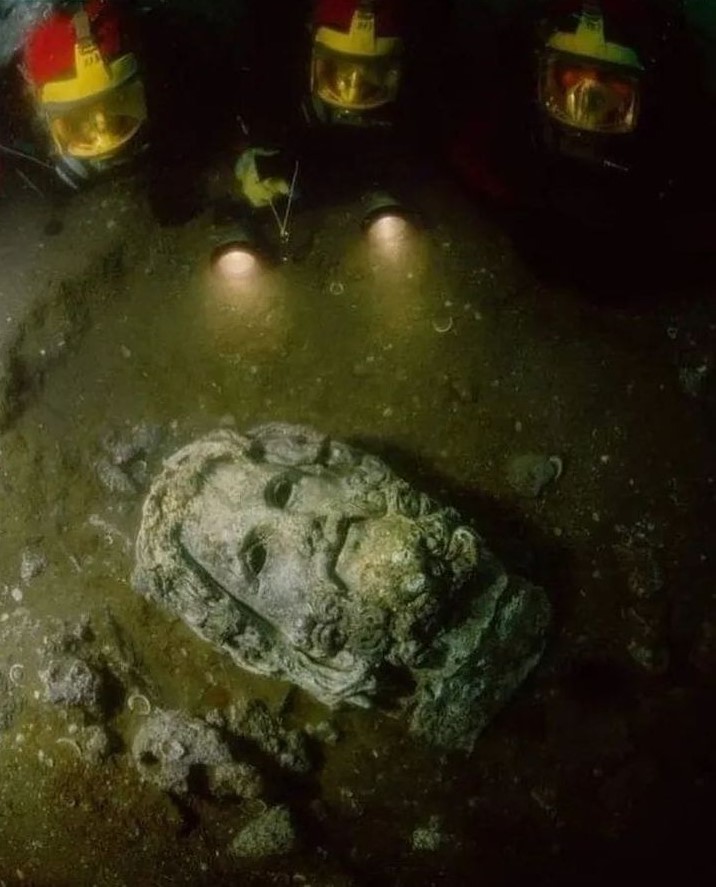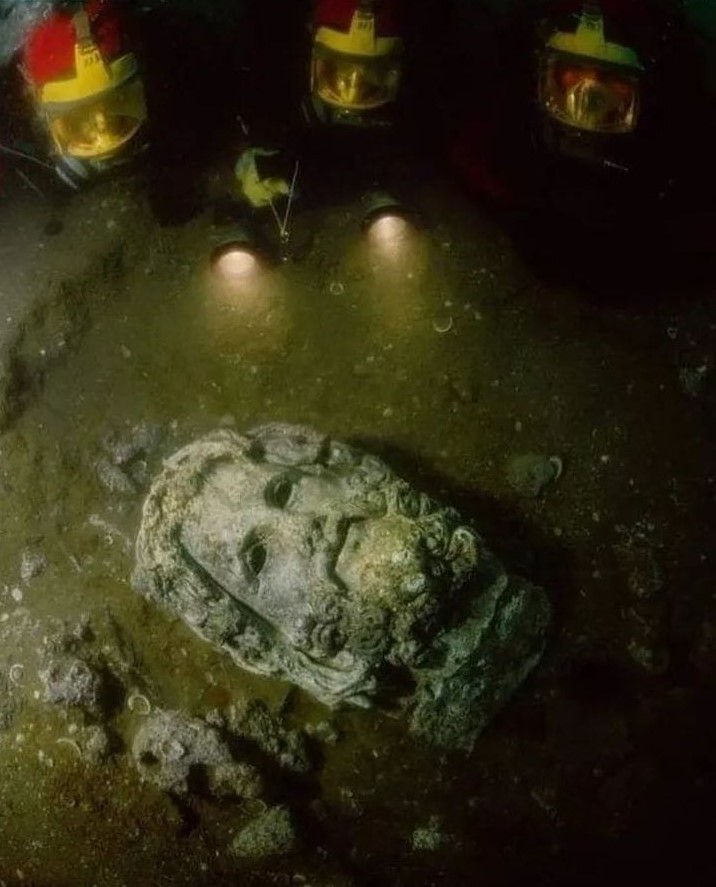In a groundbreaking discovery that has sent ripples through the world of archaeology, marine archaeologists have unearthed a colossal marble head believed to depict the Greco-Egyptian god Serapis. The find, located in the submerged city of Thonis-Herakleion off the coast of Egypt, promises to unlock new insights into the fusion of Hellenistic and Egyptian cultures during the ancient world. This article delves into the significance of this remarkable discovery, shedding light on the historical and cultural implications surrounding the colossal marble head.

-
The Sunken City of Thonis-Herakleion: Thonis-Herakleion, also known as the “Atlantis of Egypt,” was a thriving port city at the mouth of the Nile River. Submerged for over a millennium, the city’s underwater ruins have been a treasure trove for marine archaeologists seeking to unravel the secrets of the past.
-
The Greco-Egyptian God Serapis: Serapis, a syncretic deity created during the Hellenistic period, was a fusion of Greek and Egyptian religious traditions. Represented with the characteristics of both Zeus and Osiris, Serapis became a central figure in the religious landscape of Ptolemaic and Roman Egypt. The colossal marble head likely served as a manifestation of Serapis, emphasizing the cultural amalgamation that defined this period.
-
Archaeological Significance of the Discovery: The giant marble head’s discovery provides a tangible link to the religious and artistic practices of the Greco-Egyptian world. Its location in Thonis-Herakleion suggests that the city played a significant role in the worship of Serapis, contributing to our understanding of the religious and cultural dynamics of ancient Egypt during this era.
-
Artistic Mastery and Cultural Fusion: The craftsmanship exhibited in the colossal marble head attests to the artistic mastery of the time. The fusion of Greek and Egyptian artistic styles is evident in the intricate details, highlighting the syncretism that defined the Hellenistic period. The head’s sheer size suggests it adorned a monumental statue, possibly within a temple dedicated to Serapis.
-
Cultural Syncretism in Hellenistic Egypt: The Hellenistic period witnessed a profound blending of Greek and Egyptian cultures, resulting in a unique syncretic identity. Serapis, with his Greek and Egyptian attributes, became a symbol of this cultural fusion. The discovery of the colossal marble head amplifies our understanding of how religious and cultural practices converged in the ancient world.
-
Implications for Maritime Archaeology: The ongoing exploration of Thonis-Herakleion continues to redefine our understanding of maritime archaeology. Submerged cities like these offer a rare glimpse into ancient civilizations and the impact of rising sea levels. The recovery of significant artifacts, such as the Serapis head, underscores the importance of underwater archaeology in uncovering hidden chapters of history.
-
Future Discoveries and Research Avenues: The unveiling of the giant marble head is likely just the beginning of further revelations from Thonis-Herakleion. Archaeologists anticipate more discoveries that will contribute to our comprehension of the complex interactions between Hellenistic and Egyptian cultures, enriching our knowledge of this pivotal period in history.
The discovery of the giant marble head of the Greco-Egyptian god Serapis at Thonis-Herakleion marks a momentous chapter in the annals of archaeology. As marine archaeologists meticulously uncover the secrets hidden beneath the waves, each artifact brings us closer to unraveling the intricate tapestry of cultural fusion that defined the Hellenistic world. The colossal head stands as a silent sentinel, a tangible testament to the syncretism of cultures that thrived in the sunken city of Thonis-Herakleion.

